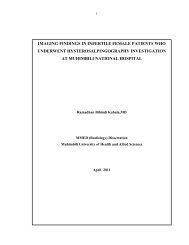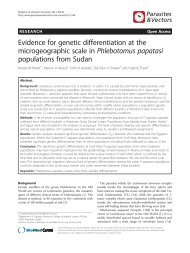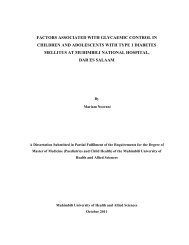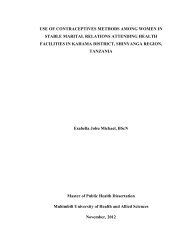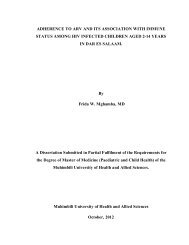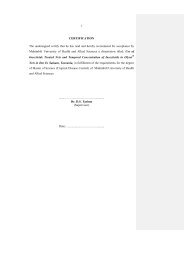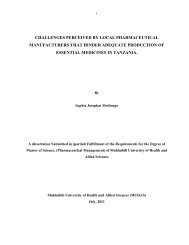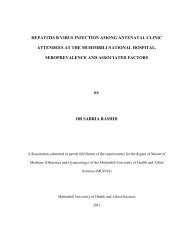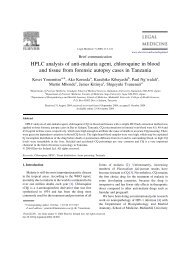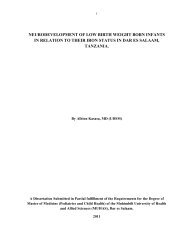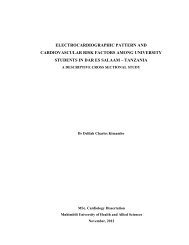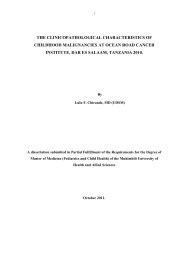DISSERTATION WORK MSAFIRI KABULWA.pdf
DISSERTATION WORK MSAFIRI KABULWA.pdf
DISSERTATION WORK MSAFIRI KABULWA.pdf
You also want an ePaper? Increase the reach of your titles
YUMPU automatically turns print PDFs into web optimized ePapers that Google loves.
21<br />
were used to assess respondent’s perception on how their parents would react if they<br />
discovered that they dip, chew or smoke tobacco. The responses for the questions were on a<br />
four points Likert scale ranging from 1= strongly disagree to 4= strongly agree. Respondents<br />
were required to indicate one option that best described their perception. The scores for the<br />
three questions were added to obtain a total score of respondent’s perception on how his/her<br />
parent would feel if they discovered he/she dipping, chewing or smoking tobacco. A<br />
respondent could score a maximum score of 12 points indicating that their parents would be<br />
highly disappointed and a minimum score of 3 points indicating that parents would not bother<br />
at all. The total score of respondent’s perception was divided by three to obtain the average<br />
score (reduced interval scale) indicating respondent’s perception on how their parents would<br />
react if they discovered that they either dip, chew or smoke tobacco i.e. (minimum value = 1<br />
and maximum value = 4). The reduced interval scale was dichotomized into two categories;<br />
parents who favours use of tobacco (1.0 – 2.49) and those who do not approve adolescents to<br />
use it respectively (2.50 – 4.0). The same question statements, computation and<br />
dichotomization were done for school teacher’s inclinations towards dipping, chewing or<br />
smoking tobacco by their students.<br />
The seven perceived factors influencing a person to start dipping snuff were assessed by a<br />
question statement ‘To what degree do you agree that the following factors attract a person to<br />
start dipping tobacco snuff The responses were given on a 4 points Likert scale ranging from<br />
1= strongly disagree to 4= strongly agree. Frequency distribution and descriptive statistics were<br />
ran to obtain the mean agreement score and the percentage score of each option; strongly<br />
disagree - strongly agree for each perceived factor influencing dipping tobacco snuff. These<br />
perceived factors were sorted and arranged in descending order of their agreement mean score.<br />
The same question statements, factors, frequency distribution and sorting of perceived factors<br />
was done for tobacco chewing and smoking respectively.<br />
The six perceived factors inhibiting a person to start dipping snuff, were assessed by a question<br />
statement ‘To what degree do you think that the following factors may inhibit a person from<br />
dipping tobacco snuff’ The responses were given on a 4 points Likert scale ranging from 1=<br />
extremely do not inhibit to 4= inhibits extremely. Frequency distribution and descriptive<br />
statistics were ran to obtain the mean agreement score and the percentage score of each option;



